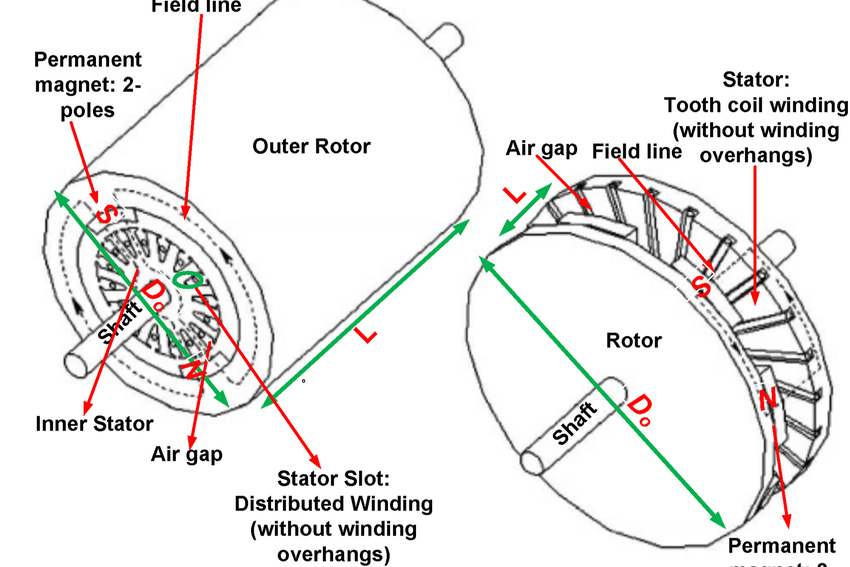Scientists Reveal the Magnetic Field of a Neutron Star
Scientists reveal the magnetic field of a neutron star which is like a giant permanent magnet.
According to the American Physics organization, neutron stars are mysterious and strange objects in the universe. Few other celestial bodies match the supernova explosion debris. Neutron stars ejected dense radiation from their magnetic poles. At the same time, when a neutron star ejected the "ray beam" toward the earth. The pulse current can be detected, and sometimes the neutron star is called pulsar.

The latest Swedish research not only analyzes the activity of the charged particles in magnetic fields, but also collates the components of the neutron star's magnetic field, which is very similar to the formation of ferromagnets.
So far, the most mysterious is the precise formation and behavior changes of the neutron star magnetic field. Researchers have thought that the magnetic field of the neutron star formed in the process of the rotation of charged particles, while the magnetic field of the neutron star should be combined with the rotating axis, but it is impossible for the researchers to know the path based on the observation data.
To uncover the mystery, a study by Johan Hansson and Anna Ponga from the Swedish University of science and technology summarized how the neutron star's magnetic field was formed. The latest studies of Hansen and bona have not only analyzed the activity of the charged particles in the magnetic field, but also proofread the components of the neutron star's magnetic field, which is very similar to the formation process of the ferromagnets.

The physics theory of Hansen and Bonn adds that when a neutron star is formed, the neutron magnetic moment will be corrected. This collation alignment usually occurs in the lowest energy configuration of neutron star nuclear force. Fundamentally, once this alignment occurs, the magnetic field of the neutron star will be locked in place. This phenomenon essentially makes a neutron star a huge permanent magnet. Sometimes Hansen and bonka call it "neutron magnet".
Similar to ordinary permanent magnets, the magnetic field of "neutron Magnets" is also very stable. The magnetic field of the neutron magnet is considered to be related to the original magnetic field of the "parent star", which acts as a catalyst. At the same time, what is more interesting is that the original magnetic field does not require the same direction as the axis of rotation.
An interesting fact is that all the neutron stars have the same mass, and Hansen and bona can calculate the intensity of the magnetic field that the neutron magnets should produce. Based on their calculated data, the magnetic field intensity of a neutron star like a
ndfeb permanent magnet is about 10^12 Tesla (a unit of magnetic induction intensity), which is the strongest observation of the magnetic field around a neutron star. The calculation data of the research team will uncover several unsolved problems related to neutron stars.
At present, the latest research theory of Hansen and Bonn needs to be further tested, because they say that the neutron star's magnetic field does not exceed 10^12 Tesla. If a neutron star has a strong magnetic field and exceeds 10^12 Tesla, the research team's theory is proved to be wrong.
Follow Us On 

About the author
Cathy Marchio
Cathy Marchio is an expert at Stanford Magnets, where she shares her deep knowledge of magnets like Neodymium and Samarium Cobalt. With a background in materials science, Cathy writes articles and guides that make complex topics easier to understand. She helps people learn about magnets and their uses in different industries, making her a key part of the company's success.
Reviews
{{viewsNumber}}
Thought On
"{{blogTitle}}"
LEVE A REPLY
(Cancle reply)
Your email address will not be published. Required fields are marked
*
{{item.children[0].name}}
{{item.children[0].created_at}}
{{item.children[0].content}}
More Replies
LEAVE A REPLY
Your email address will not be published. Required fields are
marked*
 The latest Swedish research not only analyzes the activity of the charged particles in magnetic fields, but also collates the components of the neutron star's magnetic field, which is very similar to the formation of ferromagnets.
So far, the most mysterious is the precise formation and behavior changes of the neutron star magnetic field. Researchers have thought that the magnetic field of the neutron star formed in the process of the rotation of charged particles, while the magnetic field of the neutron star should be combined with the rotating axis, but it is impossible for the researchers to know the path based on the observation data.
To uncover the mystery, a study by Johan Hansson and Anna Ponga from the Swedish University of science and technology summarized how the neutron star's magnetic field was formed. The latest studies of Hansen and bona have not only analyzed the activity of the charged particles in the magnetic field, but also proofread the components of the neutron star's magnetic field, which is very similar to the formation process of the ferromagnets.
The latest Swedish research not only analyzes the activity of the charged particles in magnetic fields, but also collates the components of the neutron star's magnetic field, which is very similar to the formation of ferromagnets.
So far, the most mysterious is the precise formation and behavior changes of the neutron star magnetic field. Researchers have thought that the magnetic field of the neutron star formed in the process of the rotation of charged particles, while the magnetic field of the neutron star should be combined with the rotating axis, but it is impossible for the researchers to know the path based on the observation data.
To uncover the mystery, a study by Johan Hansson and Anna Ponga from the Swedish University of science and technology summarized how the neutron star's magnetic field was formed. The latest studies of Hansen and bona have not only analyzed the activity of the charged particles in the magnetic field, but also proofread the components of the neutron star's magnetic field, which is very similar to the formation process of the ferromagnets.
 The physics theory of Hansen and Bonn adds that when a neutron star is formed, the neutron magnetic moment will be corrected. This collation alignment usually occurs in the lowest energy configuration of neutron star nuclear force. Fundamentally, once this alignment occurs, the magnetic field of the neutron star will be locked in place. This phenomenon essentially makes a neutron star a huge permanent magnet. Sometimes Hansen and bonka call it "neutron magnet".
Similar to ordinary permanent magnets, the magnetic field of "neutron Magnets" is also very stable. The magnetic field of the neutron magnet is considered to be related to the original magnetic field of the "parent star", which acts as a catalyst. At the same time, what is more interesting is that the original magnetic field does not require the same direction as the axis of rotation.
An interesting fact is that all the neutron stars have the same mass, and Hansen and bona can calculate the intensity of the magnetic field that the neutron magnets should produce. Based on their calculated data, the magnetic field intensity of a neutron star like a ndfeb permanent magnet is about 10^12 Tesla (a unit of magnetic induction intensity), which is the strongest observation of the magnetic field around a neutron star. The calculation data of the research team will uncover several unsolved problems related to neutron stars.
At present, the latest research theory of Hansen and Bonn needs to be further tested, because they say that the neutron star's magnetic field does not exceed 10^12 Tesla. If a neutron star has a strong magnetic field and exceeds 10^12 Tesla, the research team's theory is proved to be wrong.
The physics theory of Hansen and Bonn adds that when a neutron star is formed, the neutron magnetic moment will be corrected. This collation alignment usually occurs in the lowest energy configuration of neutron star nuclear force. Fundamentally, once this alignment occurs, the magnetic field of the neutron star will be locked in place. This phenomenon essentially makes a neutron star a huge permanent magnet. Sometimes Hansen and bonka call it "neutron magnet".
Similar to ordinary permanent magnets, the magnetic field of "neutron Magnets" is also very stable. The magnetic field of the neutron magnet is considered to be related to the original magnetic field of the "parent star", which acts as a catalyst. At the same time, what is more interesting is that the original magnetic field does not require the same direction as the axis of rotation.
An interesting fact is that all the neutron stars have the same mass, and Hansen and bona can calculate the intensity of the magnetic field that the neutron magnets should produce. Based on their calculated data, the magnetic field intensity of a neutron star like a ndfeb permanent magnet is about 10^12 Tesla (a unit of magnetic induction intensity), which is the strongest observation of the magnetic field around a neutron star. The calculation data of the research team will uncover several unsolved problems related to neutron stars.
At present, the latest research theory of Hansen and Bonn needs to be further tested, because they say that the neutron star's magnetic field does not exceed 10^12 Tesla. If a neutron star has a strong magnetic field and exceeds 10^12 Tesla, the research team's theory is proved to be wrong.















